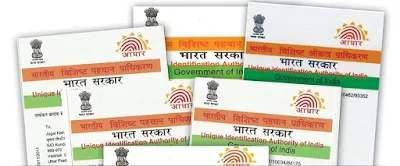A new concept of Virtual ID is introduced by the UIDAI to address the privacy concerns.
From 1st June 2018, it would be mandatory for all agencies that undertake authentication to accept the Virtual ID from their users.

From 1st June 2018, it would be mandatory for all agencies that undertake authentication to accept the Virtual ID from their users.

- Aadhar number holders can use their Virtual IDs in lieu of Aadhar number whenever authentication or KYC services are performed.
- This move aims to strengthen the privacy and security of Aadhar data.
- The idea behind this is to address privacy concerns which have resulted in a legal challenge to Aadhaar in the Supreme Court, and to also prevent potential misuse of an individual’s Aadhaar details.
What is a Virtual ID?
- Virtual ID would be a random 16 digit number mapped to the Aadhaar number of a citizen, and will come with an expiration date.
- This 16 digit number together with the biometrics of the user would give any authorized agency the limited details like the name, address, photograph of the user.
- This will give the users the option of not sharing their Aadhar number at the time of authentication.
- The Virtual ID will not be duplicable by agencies performing authentication of Aadhaar number, and hence will ensure safety of the Aadhaar number.
- The VID can be generated and revoked only by the Aadhaar number holder through channels such as the Aadhaar portal and the mAadhaar mobile app. The older VID gets cancelled each time the Aadhaar number holder issues a new one.
- UIDAI also introduced the concept of a limited KYC category which does not access the Aadhaar number.
- To enable this, UIDAI has introduced two categories of an Authentication User Agency (AUA)—an entity engaged in providing Aadhaar-enabled services.
- The limited KYC category is a ‘Local AUA’, compared with a ‘Global AUA’—which will have access to e-KYC using the Aadhaar number.


